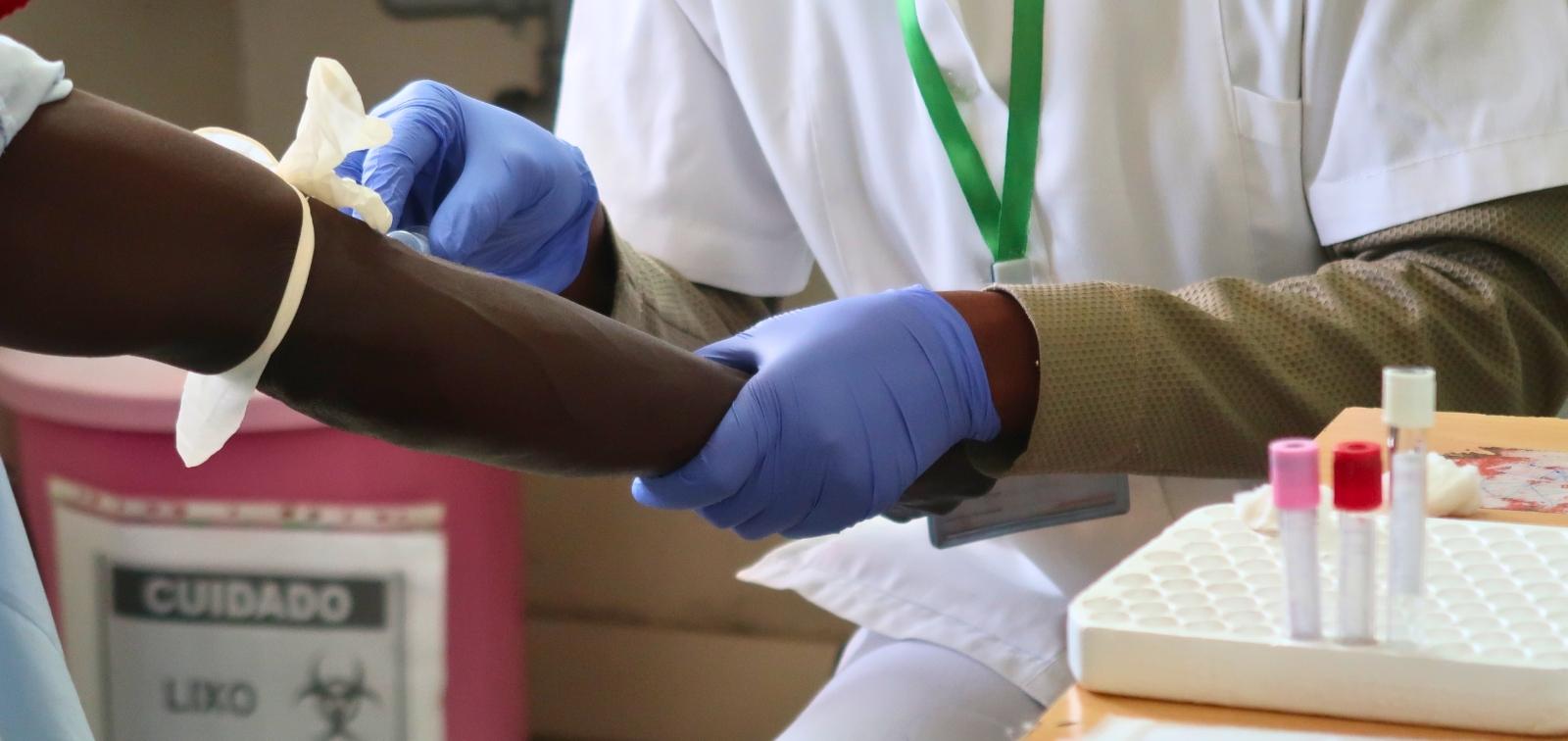Blood biomarkers to predict the severity of childhood malaria
Study in Mozambique links immune, endothelial, and parasite biomass biomarkers to severe malaria
21.05.2025
Malaria remains a major cause of illness and death, disproportionately affecting children on the African continent. It is estimated that around 430,000 children under the age of 5 in Africa die each year from this parasitic infection transmitted by mosquito bites. A study led by the Barcelona Institute for Global Health (ISGlobal), a centre supported by ”la Caixa” Foundation, in collaboration with the Manhiça Health Research Centre (CISM), has identified blood biomarkers that could help distinguish early cases of severe childhood malaria. The findings, published in the journal Scientific Reports, pave the way for new tools for risk stratification and possible complementary therapies.
Severe malaria is a complex disease caused mainly by Plasmodium falciparum, the main malaria parasite associated with these severe forms and higher mortality. It affects multiple body systems and can therefore present with a variety of clinical manifestations. Among the most common are severe anaemia, characterised by a reduction in red blood cells that limits oxygen delivery to tissues; acidosis, a disruption of the acid-base balance that can affect organ function; and cerebral malaria, in which the infection manifests itself with neurological symptoms.
What do biomarkers tell us about the severity of malaria?
Certain molecules present in the blood, known as biomarkers, have been linked to the most severe forms of malaria. These include the HRP-2 protein, which comes from the parasite itself and reflects the total parasite load in the body. Others come from the host, the human body itself, and reflect processes such as activation of the immune system or damage to the endothelium of blood vessels.
Elevated levels of both types of biomarkers may help to identify severe cases early, allowing for faster and more appropriate treatment of these more dangerous forms of the disease, ultimately reducing associated mortality.
“We investigated the possible associations between host and parasite biomarkers and disease severity in Mozambican children with malaria, something that had not been done simultaneously before,” explains Rosauro Varo, researcher at ISGlobal and first author of the study. “We included 116 children under the age of 10 with Plasmodium falciparum malaria who where admitted to the Manhiça District Hospital between September 2014 and May 2016,” he adds. The study compared 58 cases of severe malaria (including severe anemia, seizures, and coma, among other symptoms) with 58 cases of uncomplicated malaria.
The HRP-2 protein, key to understanding the mechanisms of severe malaria
Biomarkers of immune and endothelial activation (such as Angpt-2, Tie-2, and sTREM-1) are released into the blood when immune cells are activated or when the function of the endothelium—the layer of cells lining the inside of blood vessels—is altered. The team also looked at other biomarkers of immune activation (IL-6, IL-8, IP-10, sFlt-1, sTNFR-1, BDNF and cystatin C). "Quantifying the levels of these biomarkers significantly allowed us to distinguish severe cases from non-complicated cases," continues Rosauro Varo, "and provides a robust, objectively reproducible method for risk stratification in these patients".
The HRP-2 protein, which measures parasite biomass, was not only higher in severe cases, but also correlated closely with several host biomarkers, such as Angpt-2. “This supports the idea that parasite biomass plays a central role in the progression of severe malaria and helps to understand the complex interactions that make up the still incomplete puzzle of this infectious disease,” explains Alfredo Mayor, ISGlobal researcher and co-author of the study.
The combination of HRP-2 with other biomarkers included in the study could therefore help to better understand its pathophysiology, but also improve the identification of children at higher clinical risk. “These results pave the way for new studies aimed at evaluating the use of biomarkers not only for risk classification in paediatric malaria patients, but also to guide specific ancillary treatments, all with the aim of improving patient outcomes,” concludes Quique Bassat, general director of ISGlobal and senior author of the study.
Reference
Varo, R., Sitoe, A., Madrid, L. et al. Host biomarkers and parasite biomass are associated with severe malaria in Mozambican children: a case–control study. Sci Rep 15, 14262 (2025). https://doi.org/10.1038/s41598-025-98154-1



